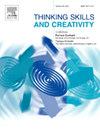Pre-service biology teachers as developers of mobile augmented reality teaching materials: Enhancing, not replacing, science practices and connections with the natural environment
IF 4.5
2区 教育学
Q1 Social Sciences
引用次数: 0
Abstract
The benefits of Augmented Reality (AR) in modernizing teaching are widely recognized. Nonetheless, doubts persist about aligning AR materials with learning goals and ensuring scientific accuracy. Current research trends highlight teachers as developers of mobile AR content (mAR) to address these gaps, yet few studies have explored biology-focused mAR. This study employed Diffusion of Innovations Theory and mixed-methods approach to examine pre-service biology teachers’ (PSBTs) perceptions of developing and integrating mAR in future teaching. Participants received training to develop their own mAR teaching content. Data are collected with using questionnaires and audio recorded discussions during training. Qualitative data were processed using content analysis, while quantitative data underwent descriptive statistics and Spearman's rank correlation. Results confirm that PSBTs are eager to produce and employ mAR materials in teaching. They believe such development stimulates creativity and fosters collaboration among teachers. Results indicate that PSBT are having opinions that teachers’ developed mAR resources can better address students’ needs, promote critical thinking, and enable hands-on experimentation that might otherwise be unfeasible. PSBTs also note that these materials can be blended with traditional tools and real-world natural surroundings, enhancing students’ connection with nature. However, technical complexity, accessibility of digital resources needs for mAR development, and lack of institutional support pose obstacles. Nonetheless, quantitative outcomes reveal a positive overall perception of mAR’s impact on teaching quality and student motivation, though PSBTs highlight the importance of ongoing training and stronger alliances with colleagues and educational managers.
职前生物教师作为移动增强现实教材的开发者:加强而不是取代科学实践和与自然环境的联系
增强现实(AR)在现代化教学中的好处已得到广泛认可。尽管如此,对于将AR材料与学习目标结合起来并确保科学准确性,人们仍然存在疑问。目前的研究趋势强调教师作为移动AR内容(mAR)的开发者来解决这些差距,但很少有研究探索以生物学为重点的mAR。本研究采用创新扩散理论和混合方法来研究职前生物教师(psbt)对在未来教学中开发和整合移动AR内容的看法。学员接受培训,发展自己的语文教学内容。数据收集采用问卷调查和录音讨论期间的培训。定性资料采用内容分析,定量资料采用描述性统计和Spearman秩相关。结果证实了ppsbt在教学中渴望制作和使用mAR材料。他们认为这样的发展可以激发创造力,促进教师之间的合作。结果表明,PSBT认为教师开发的mAR资源可以更好地满足学生的需求,促进批判性思维,并使动手实验成为可能,否则是不可行的。psbt还注意到,这些材料可以与传统工具和现实世界的自然环境相结合,增强学生与自然的联系。然而,技术复杂性、数字资源的可及性以及缺乏机构支持构成了mAR发展的障碍。尽管如此,量化结果揭示了mAR对教学质量和学生动机影响的积极总体看法,尽管psbt强调了持续培训和与同事和教育管理人员加强联盟的重要性。
本文章由计算机程序翻译,如有差异,请以英文原文为准。
求助全文
约1分钟内获得全文
求助全文
来源期刊

Thinking Skills and Creativity
EDUCATION & EDUCATIONAL RESEARCH-
CiteScore
6.40
自引率
16.20%
发文量
172
审稿时长
76 days
期刊介绍:
Thinking Skills and Creativity is a new journal providing a peer-reviewed forum for communication and debate for the community of researchers interested in teaching for thinking and creativity. Papers may represent a variety of theoretical perspectives and methodological approaches and may relate to any age level in a diversity of settings: formal and informal, education and work-based.
 求助内容:
求助内容: 应助结果提醒方式:
应助结果提醒方式:


